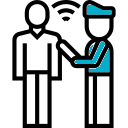 If you’re involved in an accident in Texas that results in the police coming to the scene, it’s almost a guarantee that the investigating officer will need to document the incident. This process will involve taking down a lot of information and recording it in a specialized official police accident report document — the CR3 Crash Report.
If you’re involved in an accident in Texas that results in the police coming to the scene, it’s almost a guarantee that the investigating officer will need to document the incident. This process will involve taking down a lot of information and recording it in a specialized official police accident report document — the CR3 Crash Report.
No matter how you were involved in the accident, you are likely to want a copy of this police report. As an official document, your police accident report contains information that insurance companies will often use to determine important factors like fault and compensation award amounts. This makes it crucial to not just get yourself a copy but understand just what it is you’re looking at. However, a CR3 Crash Report squeezes a lot of information into a relatively small form, and that can make it a challenge to understand, so here’s what you need to know to decipher and understand your official police report.
What’s In Your Police Accident Report?
First and foremost, your CR3 Crash Report contains as much factual information as the responding officer was able to gather the day he or she showed up to your accident site. Most notably, there will be places on the report to record the names and addresses of everyone involved in the accident. Other important information, such as age, sex, ethnicity, the extent of any injuries suffered, who was driving and who was riding as a passenger, which seats specific passengers were sitting in, and even whether they were wearing seatbelts or if there was a deployed airbag in that seat.
The fact-collecting goes deeper than this, of course. Your police accident report will also record the time and location of the accident in detail, weather and road conditions, the make, model, license plate number, and VIN number of vehicles involved, license and insurance information of any drivers, and an assessment of where each vehicle was damaged. This last process can be quite complex to decipher, as it involves a number of abbreviations and codes in order to record as much information about the accident in as compact a way as possible. This is why it is imperative that when you receive your copy of your CR3 Crash Report that you also receive the two-page code sheet that will allow you to translate the report into English!
More Than Just the Facts
 Your police accident report will contain volumes of factual information, or at least information that your responding officer attempted to collect with as much accuracy as possible. However, there’s more than just simple statements of fact in the report — the accident report will also reflect your responding officer’s opinion on how and why the accident occurred, what factors came into play, and, ultimately, if there is any fault involved when it comes to you, the other driver, or anyone else involved such as a cyclist, pedestrian, or passenger.
Your police accident report will contain volumes of factual information, or at least information that your responding officer attempted to collect with as much accuracy as possible. However, there’s more than just simple statements of fact in the report — the accident report will also reflect your responding officer’s opinion on how and why the accident occurred, what factors came into play, and, ultimately, if there is any fault involved when it comes to you, the other driver, or anyone else involved such as a cyclist, pedestrian, or passenger.
Police officers are human, and they make mistakes. Part of the reason why you need a copy of the police report for yourself is so that you have an opportunity to review the report yourself and ensure that not only all the facts such as names, addresses, and license numbers are correct but also to ensure that the police officer’s interpretation of events is accurate and reflects the accident from your point of view. If there are substantial differences between their account and your own, this could spell some major problems for you when it comes time to make an insurance claim against the other driver.
Fixing an Inaccurate Report
Just because your CR3 Crash Report contains inaccurate information doesn’t mean that you can’t do anything about it. In fact, the police accident report has the contact information for the responding officer displayed prominently at the bottom of the second page, which should include his or her printed name, badge number, and department. You can use this contact information, along with any information you may have been given by the officer at the time of the accident, to speak with them and inform them of any discrepancies.
In the case of factual information being incorrect, responding officers will often take it upon themselves to file an amendment to their original report that corrects the record. However, investigating officers are not obligated to amend their report if your version of the truth differs from their opinion of what happened during the accident, who they feel may be at fault, or other similar things. In this case, however, you’re not out of luck — you can draft a letter with the aid of your accident lawyer that tells your side of the story, which can then be submitted along with the police accident report as supplemental material. This can be helpful in disputing or resolving accident claims related to the accident in the future.
A Police Accident Report Roundup
Any accident that the police respond to in Texas is likely to have an accompanying accident report. In fact, it’s a matter of law if the accident resulted in any injuries or deaths, or at least $1000 in estimated damage. If this is the case with your accident, your responding officer will fill out and file a police report. If not, you will need to fill out a crash report yourself, using the TexasDOT’s CR-2 Crash Report form, and submit it yourself.
Remember, you’re entitled to a copy of your police report, and you’re also entitled to ensure the information contained therein is accurate. If there are any factual discrepancies, alert your responding officer so that they can amend the report. If there are differences of opinion between you and the officer, you may need to draft a separate letter to provide a record of your own version of events and have it submitted to supplement your report.
If you have any questions or concerns about what’s in your police accident report, always speak to a qualified accident lawyer. He or she can help you understand your report and what you may need to do to ensure it’s accurate.